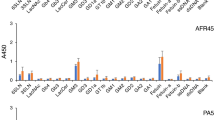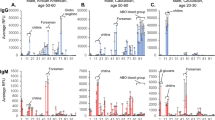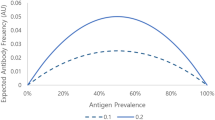Abstract
WHITE blood cells from normal healthy O group people, when suitably tagged with chemicals such as 1-fluoro-2,4-dinitrobenzene (FDNB), can be used as antigens to stimulate the production of antibodies to human leukaemic cells in rabbits and horse1,2. We have shown that chemically tagged normal O group white blood cells can be used successfully to induce a specific autoimmune response to leukaemic cells in human leukaemic patients.
This is a preview of subscription content, access via your institution
Access options
Subscribe to this journal
Receive 51 print issues and online access
$199.00 per year
only $3.90 per issue
Buy this article
- Purchase on Springer Link
- Instant access to full article PDF
Prices may be subject to local taxes which are calculated during checkout
Similar content being viewed by others
References
Sahasrabudhe, M. B., Indian J. Cancer, 5, 217 (1968).
Sahasrabudhe, M. B., Prema, S., Madyastha, K. R., Gollerkeri, M. P., and Rao, S. S., Nature, 232, 197 (1971).
Berenbaum, M. C., in Immunity, Cancer and Chemotherapy (edit. by Mihich, E.), 217 (Academic Press, 1967).
Author information
Authors and Affiliations
Rights and permissions
About this article
Cite this article
SAHASRABUDHE, M., MADYASTHA, K., PREMA, S. et al. Induction of Specific Autoimmune Response to Leukaemic Cells in Human Leukaemia Patient by Chemically Tagged Normal “O” Group White Blood Cells. Nature 232, 198–199 (1971). https://doi.org/10.1038/232198a0
Received:
Revised:
Issue Date:
DOI: https://doi.org/10.1038/232198a0
This article is cited by
Comments
By submitting a comment you agree to abide by our Terms and Community Guidelines. If you find something abusive or that does not comply with our terms or guidelines please flag it as inappropriate.



